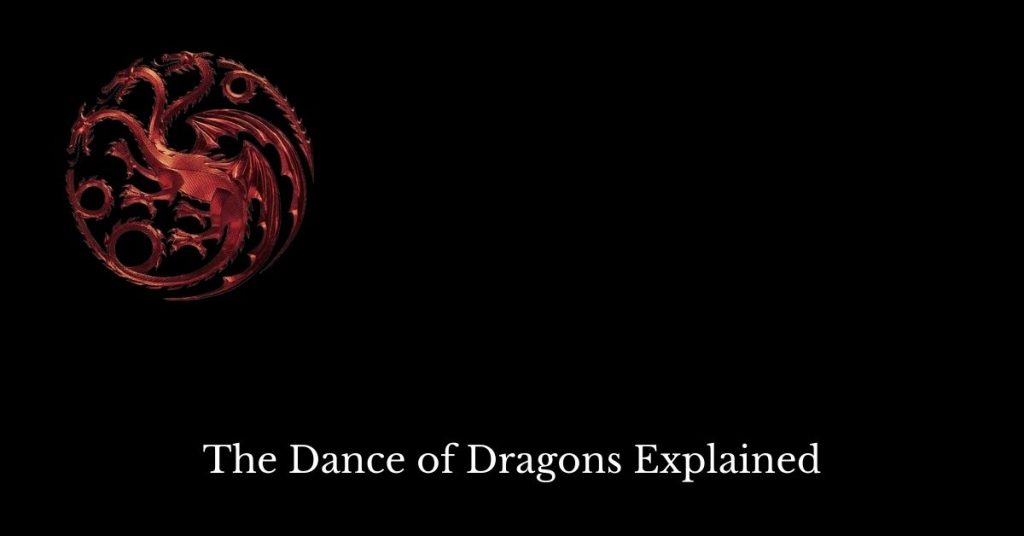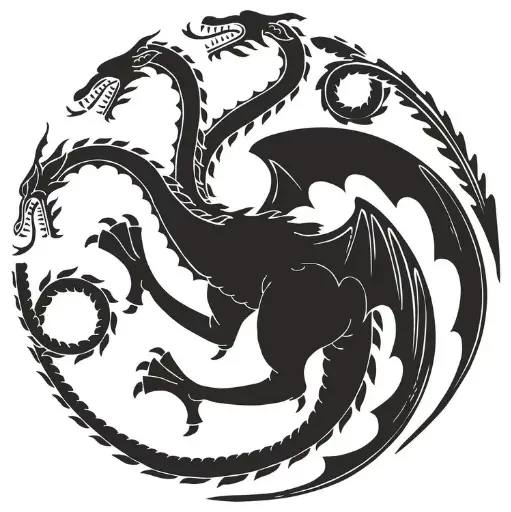The Dance of the Dragons Explained

In the tapestry of Westerosi lore, few events resonate as profoundly as the Dance of Dragons, a devastating civil war within House Targaryen. This epic clash, deeply rooted in ambition, power, and dynastic struggle, has captured the imagination of fans and historians alike. As “House of the Dragon” breathes life into this tumultuous era, the significance of the Dance of Dragons becomes a cornerstone in the narrative, shaping the destiny of characters and kingdoms. In this exploration, we delve deep into the genesis, impact, and enduring importance of the Dance of Dragons, unraveling the complex threads that make it an indispensable part of the Westerosi saga.
Contents
- 1 The Dance of Dragons “Civil War” Key Stages, Explained in Detail
- 2 What Causes the Dance of the Dragons
- 3 Who are the Key Players in Dance of the Dragons
- 4 What is the Role of Dragons
- 5 The Impact on Westeros
- 6 The Significance in “House of the Dragon”
- 7 Final Words
- 8 FAQs
- 8.1 What exactly was the Dance of Dragons?
- 8.2 Why did the Dance of Dragons happen?
- 8.3 What role did dragons play in the Dance of Dragons?
- 8.4 How did the Dance of Dragons impact the future of Westeros?
- 8.5 What significance does the Dance of Dragons hold in “House of the Dragon”?
- 8.6 Are there any surviving characters from the Dance of Dragons in “House of the Dragon”?
- 8.7 Will the Dance of Dragons be the main focus of “House of the Dragon”?
The Dance of Dragons “Civil War” Key Stages, Explained in Detail
Here is the complete step by step way to understand the Dance of Dragons;
- Prelude
- The Dance of the Dragons
- The Small Council Meeting
- Coronation of Aegon II
- The Black Council and Coronation of Rhaenyra
- Assault on Harrenhal
- The Dance over Shipbreaker Bay
- Blood and Cheese
- Civil war in the Riverlands
- The new green Hand
- Duel of the Cargyll Twins
- Duskendale and Rook’s Rest
- The Dragonseeds
- Battle of the Gullet
- Battle of the Honeywine
- The Red Fork and the Fishfeed
- Fall of King’s Landing
- The Red Kraken
- Butcher’s Ball
- First Tumbleton
- Fall of Dragonstone
- Battle Above the Gods Eye
- Storming of the Dragonpit
- Second Tumbleton
- Rhaenyra’s Death
- Moon of the Three Kings
- Battle of the Kingsroad
- Aegon II’s Death
- Aftermath
- The False Dawn
- Hour of the Wolf
- Regency of Aegon III
- Changed views on Inheritance
What Causes the Dance of the Dragons
The Dance of Dragons, a strife that tore through the heart of House Targaryen, found its origins in the question of succession. Princess Rhaenyra Targaryen, the designated heir, stood on one side, her claim rooted in blood and lineage. On the other side was her half-brother Aegon II Targaryen, who contested her right to the Iron Throne. The realm, already teetering on the edge of political unrest, became a battleground where familial loyalty clashed violently with the hunger for power. The war’s roots were sown in the ambitions of individuals, but its consequences would echo across generations.
Who are the Key Players in Dance of the Dragons
Central to the Dance of Dragons were formidable and ambitious characters, each with their motivations and loyalties. Princess Rhaenyra, a woman of strength and conviction, fought fiercely to claim her birthright. Aegon II, her half-brother, represented a stark contrast, embodying the ruthlessness bred from desperation. Surrounding them were a host of dragonriders, advisers, and allies, each with their agendas and alliances, adding layers of complexity to the conflict. The clash of these personalities and ambitions created a maelstrom of intrigue and warfare, defining an era with their choices and sacrifices.
What is the Role of Dragons
At the heart of the Dance of Dragons were the dragons themselves, magnificent and fearsome creatures that had long been the hallmark of House Targaryen’s power. These dragons, bonded with their riders, became instruments of destruction, their fiery breaths deciding battles and shaping the course of the war. The dwindling number of dragons, coupled with the loss of skilled dragonriders, became a symbol of the decline of House Targaryen’s might. The Dance marked an era where these majestic beasts became both weapons of war and vulnerable targets, their presence intensifying the stakes of every conflict.
The Impact on Westeros
The Dance of Dragons left an indelible mark on Westeros, altering the political and social fabric of the realm. The war led to the near-extinction of dragons, an event that had far-reaching consequences, weakening the Targaryen grip on the Iron Throne. The devastation caused by the conflict, both in lives lost and allegiances shattered, reverberated across generations, breeding mistrust and shaping the perspectives of those who came after. The scars of the Dance served as a cautionary tale, reminding Westeros of the perils of unchecked ambition and the potential for familial discord to tear a kingdom apart.
The Significance in “House of the Dragon”
As “House of the Dragon” unfolds on screens, the Dance of Dragons assumes a central role, infusing the series with dramatic tension and historical weight. Viewers witness firsthand the intricate webs of deceit, the clash of loyalties, and the brutal realities of war. The characters, once distant figures in the annals of history, come alive, their struggles and triumphs resonating with the audience. The Dance serves as a stark reminder that even the most powerful dynasties are not immune to internal strife, and the pursuit of power can exact a staggering toll.
Final Words
The Dance of Dragons, a saga of ambition, power, and tragedy, continues to captivate audiences through “House of the Dragon.” In this epic conflict, the complexities of human nature are laid bare, showcasing the heights of heroism and the depths of betrayal. As viewers immerse themselves in the breathtaking visuals and compelling storytelling of the series, they are reminded that the echoes of the Dance of Dragons, though rooted in history, resonate through the very foundations of Westeros. It is a reminder that in the volatile game of thrones, alliances are fragile, power is fleeting, and the consequences of one’s choices can reverberate across time, shaping the fate of kingdoms and the destiny of dragons.
FAQs
What exactly was the Dance of Dragons?
The Dance of Dragons was a devastating civil war within House Targaryen, fought over the succession to the Iron Throne of Westeros. It took place approximately 200 years before the events of the main “Game of Thrones” series and is a central theme in the “House of the Dragon” series.
Why did the Dance of Dragons happen?
The Dance of Dragons occurred due to a disputed succession. Princess Rhaenyra Targaryen, the designated heir, was challenged by her half-brother, Aegon II Targaryen. This led to a bitter and bloody conflict, tearing apart House Targaryen and the realm.
What role did dragons play in the Dance of Dragons?
Dragons were pivotal in the Dance of Dragons. They were not only symbols of Targaryen power but also active participants in battles. Dragonriders, those who could control dragons, engaged in aerial warfare, and the fate of battles often hinged on the actions of these formidable creatures.
How did the Dance of Dragons impact the future of Westeros?
The Dance of Dragons had far-reaching consequences. It led to a significant reduction in the number of dragons, weakening House Targaryen’s power. The war also shattered alliances, leading to a climate of mistrust and political instability that lasted for generations.
What significance does the Dance of Dragons hold in “House of the Dragon”?
In “House of the Dragon,” the Dance of Dragons serves as a crucial backdrop, shaping the characters’ motivations and the political landscape of Westeros. It provides a compelling narrative, illustrating the complexity of power struggles and the human cost of ambition.
Are there any surviving characters from the Dance of Dragons in “House of the Dragon”?
While specific details about the characters in “House of the Dragon” have not been revealed, some historical figures from the Dance of Dragons era might be mentioned or referenced in the series, providing context for the events unfolding on screen.
Will the Dance of Dragons be the main focus of “House of the Dragon”?
While the Dance of Dragons is a significant aspect of “House of the Dragon,” the series is expected to explore various facets of Targaryen history. It will likely delve into the political intrigue, personal relationships, and the impact of dragons on Westeros, providing a comprehensive view of the Targaryen dynasty.
